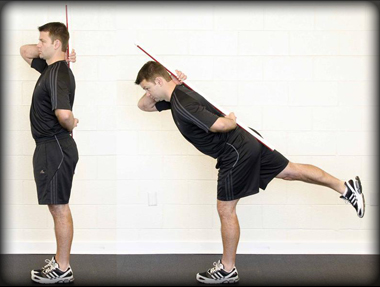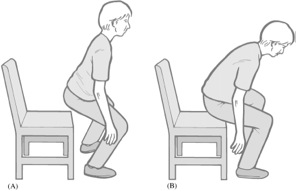Too often I see people that are in a lot of pain and they tell me they just don’t know how this happened. It just seemed to come on out of the blue. But looking at our everyday routines that we do and looking at how well we do this, can influence the effect on our backs.
Lets look at the everyday repetitive task of sit to stand.
How many times do you go from a sitting position to standing position and vice versa?
Have you ever thought about how this is done?
Do you do it correctly?
The main thing that can go wrong here is the person’s inability to use their legs and which makes them rely on their back instead. I find this is a big influence on an individual’s low back. This repetitive movement should be achieved by using your legs. If done poorly, as in flopping in and out of the chair, will cause repetitive trauma to your lumbar vertebrae and discs.
Over time and because of our sedentary lifestyles, we lose the ability of our hips to hinge. Sitting and low levels of activity can lead to poor motor patterning, restrictions in the hip flexors, and glute activation. In order to facilitate the correct motor patterning, we must re-educate the body on the mechanisms by which to activate this kinetic chain and perform what is known as a ‘hip hinge.’
This ‘hip hinge’ means the ability to bend in the hips and knees to lift something instead of in your waist or spine. We need this hinge when we rise from a chair, get in or out of the car, up and down from bed or washing your face. One of the best ways to protect your back is to make sure that your hips have the ability to hinge, especially early in the morning or when performing an arduous task such as lifting an object.
The figure below shows a person squatting down whilst hinging mostly in the waist. This is potential harmful to your spine.
This figure shows the same person squatting, but this person is hinging in the hips.
To practice this movement, all you need is a chair.
1. Start by sitting on the edge of the chair;
2. Engage your core and pelvic floor muscles;
3. Lift your breastbone up towards your chin;
4. Whilst keeping your chest lifted, stand up through your legs especially using your buttocks and thighs;
5. Keep weight on your heels;
6. It is alright for your shoulders to move forward of your hips, but maintain a forward “C” shape of your spine.
7. Then reverse the movement in sitting down, with weight on your heels, and leading with the buttocks to the chair, whilst keeping your chest up;
8. Repeat 10-15 times daily
After a few weeks your body should start to develop the correct motor patterning and will become easier for you to do, so unconsciously you will be able to sit to stand much more effective and your back will be grateful to you for this.
NB: if this exercise feels hard and you are unable to control the movement, begin with a surface that is higher such as a arm rest of a couch or a bar stool.
If you would like more information or would like to book an appointment at Neurohealth Chiropractic – please call the clinic on 9905 9099 or email us admin@neurohealthchiro.com.au or fill in the contact form from our website www.neurohealthchiro.com.au
Sign up to receive Neurohealth Chiropractic’s Free monthly health newsletter on the Right Hand Side of this page. Filled with great information and lots of easy health tips to keep you at Optimal Health!
This article is written by Dr. Steven Cannon, Chiropractor – Neurohealth Chiropractic







